ISS: STP-H8 (Space Test Program Houston 8)
EO
Atmosphere
Ocean
NASA
Quick facts
Overview
| Mission type | EO |
| Agency | NASA |
| Mission status | Operational (nominal) |
| Launch date | 21 Dec 2021 |
| Measurement domain | Atmosphere, Ocean |
| Measurement category | Atmospheric Humidity Fields, Ocean surface winds |
| Measurement detailed | Atmospheric specific humidity (column/profile), Wind vector over sea surface (horizontal), Wind speed over sea surface (horizontal), Atmospheric specific humidity (at surface) |
| Instruments | COWVR, TEMPEST |
| Instrument type | Imaging multi-spectral radiometers (passive microwave) |
| CEOS EO Handbook | See ISS: STP-H8 (Space Test Program Houston 8) summary |
ISS Utilization: STP-H8 (Space Test Program Houston 8) - two USSF technology instruments for the ISS
COWVR TEMPEST Launch STP-H7 Mission Status References
• November 2, 2021: Two instruments launching to the International Space Station in a few weeks could be weather-forecasting game changers. The two novel instruments are expected to demonstrate that while they are much smaller, much lighter, and much less expensive than weather satellites orbiting today, they can collect some of the same essential data. 1)
The objective of the COWVR (Compact Ocean Wind Vector Radiometer) instrument is to measure the direction and speed of winds at the ocean surface. The TEMPEST (Temporal Experiment for Storms and Tropical Systems) instrument looks at atmospheric humidity.
Designed and built at NASA’s Jet Propulsion Laboratory in Southern California, the two instruments are technology demonstrations. NASA will archive the data and make it available to all interested users, but the main purpose of the mission is to prove the instruments can operate in space and supply data for weather forecasts. Together, they’re part of a U.S. Space Force (USSF) mission called Space Test Program-Houston 8 (STP-H8), expected to launch to the space station on 21 December 2021.
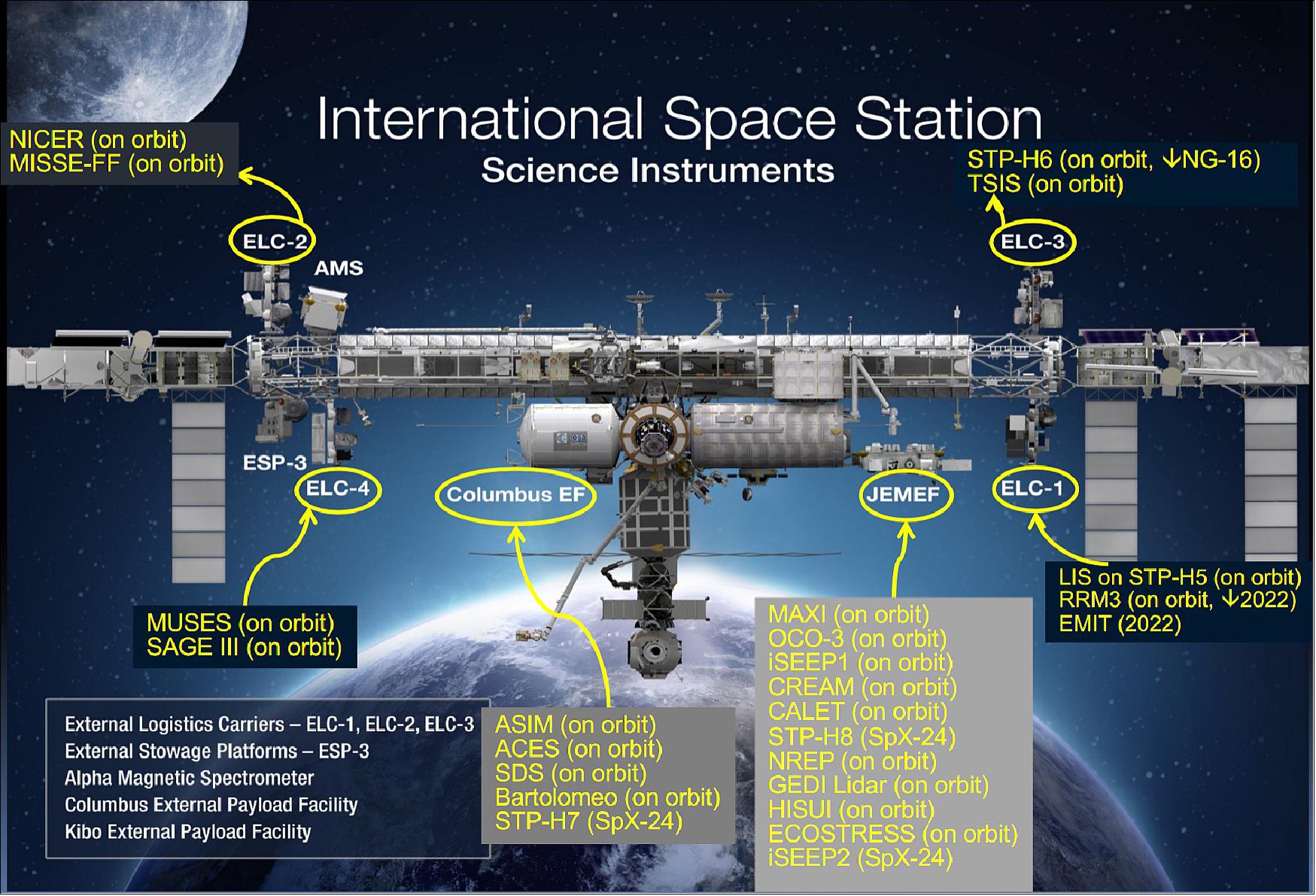
COWVR (Compact Ocean Wind Vector Radiometer)
Almost a decade in the making, COWVR grew from the space-based weather-forecasting and environmental observation programs of U.S. Department of Defense (DoD). The military collects data to forecast ocean surface winds with a spaceborne instrument named WindSat, launched in 2003.
A microwave radiometer, WindSat measures naturally occurring microwaves emitted from Earth’s atmosphere and surface. Over the ocean, when wind increases and waves grow larger, microwave emissions also increase. A microwave radiometer records these changing emissions, and processing the data can reveal both the speed and the direction of winds at the ocean surface. Those measurements are critical for monitoring how storms such as hurricanes develop, and they feed into forecasts and warnings to coastal populations and ships at sea.
WindSat has far exceeded its projected life span and is still operating, but in 2012, the Air Force began work on a replacement radiometer of the same sort, intending to launch the new instrument before WindSat went out of service. The expense and difficulty of building this type of instrument got DoD scientists thinking about what a next-generation ocean wind sensor could be. That’s where NASA came in.
Shannon Brown, a JPL engineer, had been working on a microwave radiometer for the oceanographic mission Jason-3, developed by NASA, the National Oceanic and Atmospheric Administration, and European partners to measure sea surface height. Brown recognized that the Jason-3 instrument’s design advances could be repurposed to meet the needs of weather forecasters. “We put a concept together that used most of the Jason-3 hardware designs, and we found it could measure wind speed and direction at a much lower cost than what the Air Force was building,” he said.
The novel aspect of COWVR is its simplified design. The WindSat radiometer rotates about 30 times a minute as it gathers data. The engineering challenge of developing and powering up parts that can rotate many millions of times in space has proven to be one of the most expensive and demanding aspects of radiometer development.
COWVR reduces the number of moving parts, replacing hardware with algorithms newly developed for the instrument by Brown and his colleagues. The algorithms tease the desired signals of wind speed and direction out of the raw data stream. Parts that still must rotate are now housed on a turntable so they don’t need to be powered individually. The streamlined instrument weighs only 130 pounds (58.7 kg) and uses 47 watts of power to operate – about as much as a bedside lamp – where WindSat weighs 990 pounds (450 kg) and uses 350 watts.
A team of NASA scientists and engineers began developing the instrument in 2013 at JPL with a budget of $24 million – one-fifth the cost of WindSat. They completed COWVR on budget and on schedule in 27 months, aiming for a planned launch in 2018. “It took a really talented team to do that,” Brown pointed out. “We had to use everyone’s best engineering judgment to keep moving forward.”
Don Boucher, principal scientist in the chief architect’s office of the U.S. Space Force (which took over space operations from the Air Force this year), monitored the project for the military. “COWVR has the distinct possibility of being an absolute game changer for our users,” he said. “It’s simpler to build, simpler to test, the timeframe to build the instrument is less – so you can build more of them for the same amount of money as one conventional radiometer. That has tremendous implications for our supply chain.”
When the planned 2018 launch didn’t pan out, the Air Force turned to the Space Test Program, which provides launches to the space station for the military science and engineering community. The space station orbit will give COWVR a view of the ocean surface at different times of day on each orbit, compared with a Sun-synchronous orbit that carries a satellite over any part of globe at the same time each day. Over time, this will aid understanding of how ocean waves develop and change throughout the day.
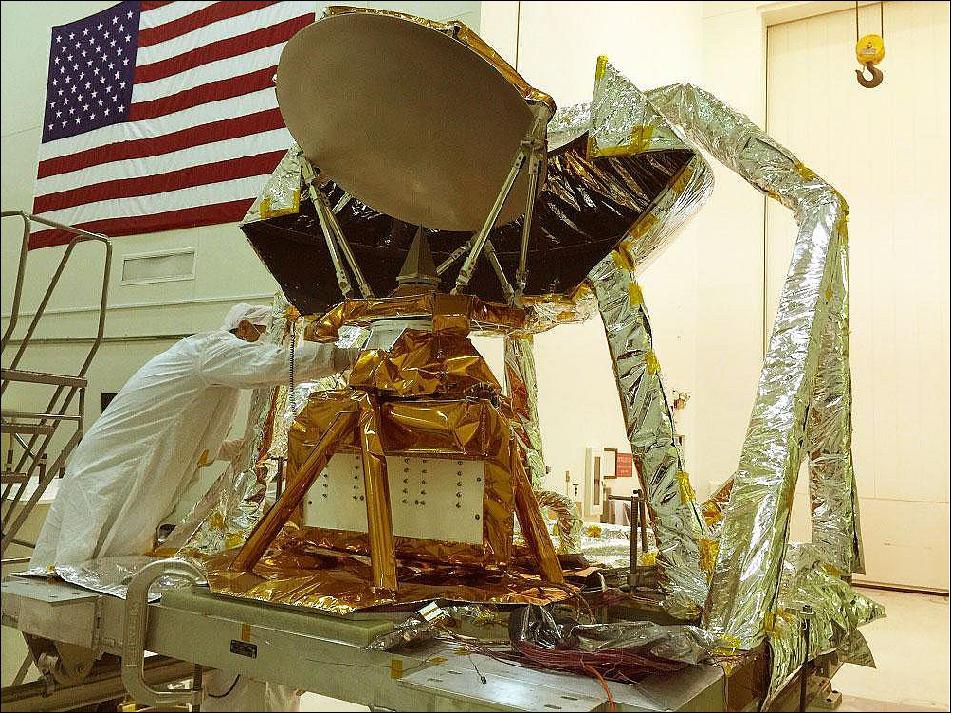
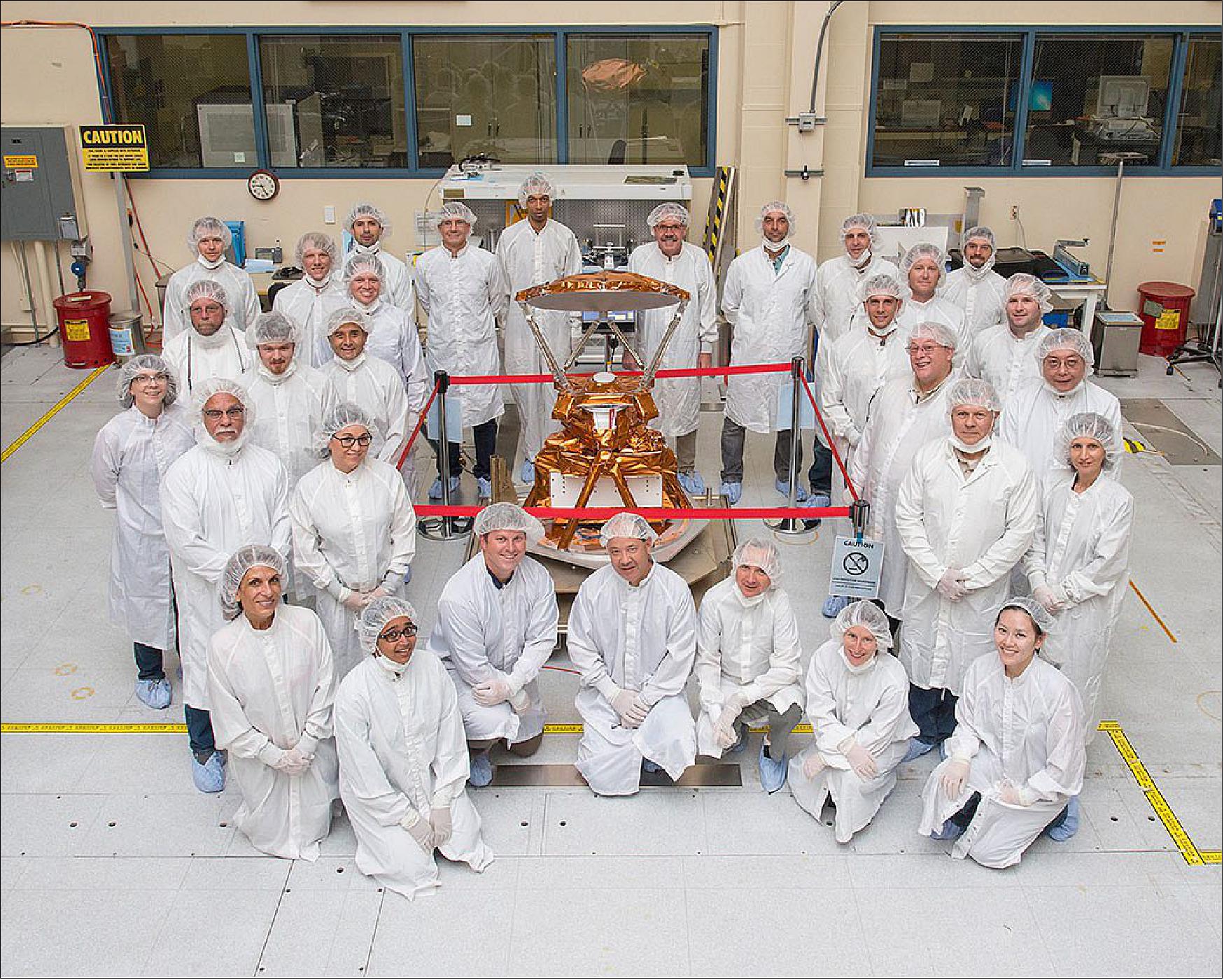
TEMPEST (Temporal Experiment for Storms and Tropical Systems)
“The Navy is really interested in monitoring tropical cyclone intensity, but that was one of the things we couldn’t design into COWVR because we had a very compressed schedule,” JPL’s Brown said. But JPL had an instrument already built for just that purpose: TEMPEST. About the size of a cereal box, it was a flight spare – a duplicate created in case of damage or other problems with a spaceborne instrument – for the TEMPEST-D 2018 NASA technology demonstration mission.
TEMPEST, too, is a microwave radiometer, but instead of winds, it measures microwave wavelengths that are sensitive to the presence of water vapor. Collecting data on multiple hurricanes and other storms between 2018 and last June, it had already demonstrated that it could measure water vapor at several levels of the atmosphere as well as the heritage satellites do.
“TEMPEST brings to the table an ability to sense both the amount of atmospheric moisture and its vertical distribution,” said Steve Swadley, the lead for calibration and validation of microwave sensors at the U.S. Naval Research Laboratory in Monterey, California. “This is important both for numerical models and for characterizing the moisture surrounding tropical cyclones. So when Shannon [Brown] told us, ‘We have a spare TEMPEST – would that be useful on this mission?’ the answer was an emphatic yes.”
If the instruments operate as expected, the lower-priced new technology is likely to see widespread use. Organizations would be able to launch four or five satellites on the same budget that formerly would have paid for one. Currently, there are so few weather satellites that only one or two of them may pass over a growing storm in an entire day. Those few “snapshots” of a storm don’t give forecasters enough information to monitor the kind of explosive growth that so many storms now exhibit. More satellites will give scientists a chance to increase the accuracy of forecasts and save more lives.
But that’s looking far ahead, Brown noted. The STP-H8 mission is still a technology demonstration to show the feasibility of the instruments. “We have no reason to think we won’t meet our objectives, but whatever comes out of it, we’re confident that we’re going to learn a lot.”
Launch
Launched on 21 December 2021 to the space station on the CRS-24 flight of SpaceX, the COWVR and TEMPEST instruments could lead the way to big improvements in gathering key information for weather forecasting. 3)
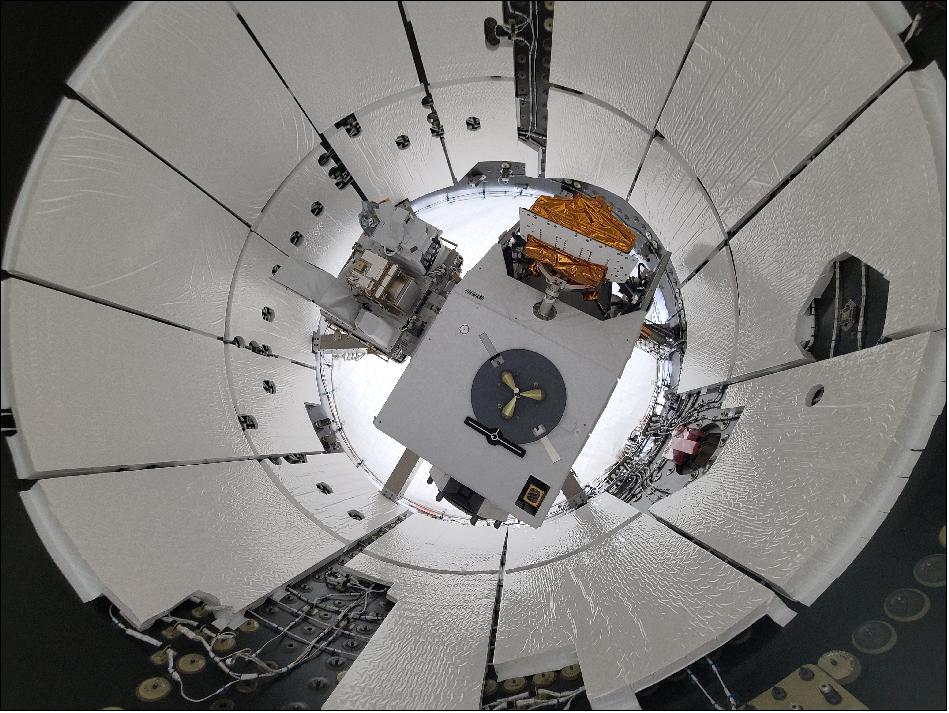
Here are five things to know about COWVR and TEMPEST
1) They aim to collect the same high-quality data as their much larger predecessors.
Together, COWVR and TEMPEST will provide many of the data points that scientists use to produce weather and climate forecasts: They’ll measure not only the speed and direction of winds blowing over the ocean surface, but also precipitation, atmospheric moisture, how that moisture is distributed vertically, and other conditions at the ocean surface and in the atmosphere.
From 2003 to 2020, these types of measurements were acquired by the 450 kg Windsat instrument aboard the U.S. Department of Defense’s Coriolis satellite. Windsat lasted well beyond its anticipated lifespan. If COWVR and TEMPEST prove they’re up to the task, they (and small instruments like them) will be able to take the place of larger, aging satellites without compromising on data quality.
2) They have the potential to improve storm forecasts.
COWVR and TEMPEST will be attached to the space station, which circles our planet in low-Earth orbit from west to east about 16 times per day. Because of the station’s unique orbit, the two instruments will spend most of their time over the mid-latitudes and tropics – areas prone to storms – and revisit them more frequently than sensors in other orbits. The additional data will help scientists better understand storm formation and better track developing storm systems.
COWVR and TEMPEST will also be able to send the data back to Earth faster than some other instruments currently in use, enabling scientists and forecasters to monitor the rapid intensification many storms undergo – in near real time. “Most satellites communicate with just a few ground stations around the world, and that takes time,” said Shannon Brown, principal investigator for COWVR based at JPL. “The data could be a couple of hours old before it’s even on the ground, and then it still needs to be processed.”
COWVR and TEMPEST will also be able to send the data back to Earth faster than some other instruments currently in use, enabling scientists and forecasters to monitor the rapid intensification many storms undergo – in near real time. “Most satellites communicate with just a few ground stations around the world, and that takes time,” said Shannon Brown, principal investigator for COWVR based at JPL. “The data could be a couple of hours old before it’s even on the ground, and then it still needs to be processed.”
COWVR and TEMPEST will instead send their data back to Earth via NASA’s tracking and data relay satellite (TDRS) constellation. “TDRS essentially provides a direct data stream. So, once the sensors pass over a big hurricane or cyclone, you’re going to get that data instantly,” Brown said. “It’ll be up-to-the-minute observations, which is something not usually available with the traditional approach” – and something that could save lives.
3) Their comprehensive data may improve weather and climate model predictions.
The frequency with which COWVR and TEMPEST will take measurements over areas within their orbit will allow them to collect more comprehensive data than other instruments – data that is expected to reduce uncertainties in weather and climate models.
“The current satellite sensors that measure wind speed and direction at the ocean surface are in Sun-synchronous orbits, meaning that they provide measurements at a given location only in the morning and in the evening, leaving gaps in between,” said JPL’s Tony Lee, co-lead of the mission’s science working group. “The space station’s orbit will allow COWVR and TEMPEST to take measurements across different times of day, reducing those gaps.”
Weather and climate models use this type of data to make predictions. The more data that is available, the more accurate the models – and the predictions based on them – will be.
4) They’ll shed light on how air-sea interactions affect weather and climate.
The amount of heat and moisture released by the ocean influences atmospheric conditions; likewise, atmospheric conditions, such as wind, influence ocean currents and heat distribution. The more scientists learn about these interactions, the better they’ll understand how they affect weather in the short term and climate in the long term.
Getting suitable data to study these interactions can be tricky, though.
If successful, COWVR and TEMPEST could change that. COWVR’s main purpose is to measure the speed and direction of wind at the ocean surface, and TEMPEST’s is to provide the atmospheric water vapor measurements. Since they’re flying together and taking measurements over the same areas, they’ll be able to acquire this complementary data at the same time.
“Simultaneous measurements of the different variables alleviate the difficulty associated with sampling time differences that come from mixing measurements from different satellites at different times,” Lee said. It will also enable them to account for interactions that happen at shorter time scales – wind gusts stirring up the ocean and causing it to lose heat to the atmosphere, for example.
5) They’ll pave the way for future satellite constellations.
If COWVR and TEMPEST perform well, they’ll prove that comprehensive data vital to weather forecasting and a better understanding of climate can be obtained in a much smaller package with a much smaller price tag than previously thought.
Because the instruments are smaller and cheaper, organizations could launch three or four small satellites for the same cost as one of the larger variations. A constellation of these small satellites would be able to take measurements of a given area – such as over a developing storm – far more frequently than a corresponding single satellite could, resulting in even further refinement of weather models and forecasts.
STP-H7 (Space Test Program -Houston7)
The STP-7 pallet features several different experiments, including CASPR, from various institutions. The integration of the pallet is under the management of the DoD STP Human Spaceflight Payloads Office. The STP-H7 package was installed externally on the Columbus module
Experiments on STP-7 include:
• CASPR (Configurable Autonomous Sensor Processing Research), including a 8U binocular camera iSIM-90 optics mounted atop a gimbal-actuated platform. CASPR t is a university-led experiment developed by student and faculty researchers at the NSF Center for Space, High-performance, and Resilient Computing (SHREC) at the University of Pittsburgh for the Space Test Program – Houston 7 (STP-H7) mission to the International Space Station (ISS). The iSIM-90 is an innovative, high-resolution optical payload for Earth-observation missions developed by SATLANTIS MICROSATS SL. The objective is to study and evaluate new technologies including sensors, computer systems, and machine-learning and computer-vision (ML/CV) applications for space-based sensing with autonomous sensor processing. 4)
• GARI-1 (GAGG Radiation Instrument). The two identical GAGG instruments, are designed to space-qualify new gamma-ray detector technology for space-based astrophysical and defense applications. The detector technology offers improved energy resolution, lower power consumption and reduced size compared to similar systems. Each identical GARI instrument consists of a two cerium-doped gadolinium aluminum gallium garnet (GAGG (Gd3(Al,Ga)5O12 :Ce)) scintillation detectors. 5)
• Falcon Neuro. Falcon Neuro is the latest payload to be built and flown on the International Space Station (ISS) by cadets and faculty at the Air Force Academy. The objective of the mission is to use neuromorphic cameras to detect lightning and sprites from low earth orbit. Neuromorphic cameras are a class of non-traditional imaging devices inspired by biological retinas. These devices operate in a fundamentally different imaging paradigm from conventional cameras, producing a spatio-temporal output instead of conventional frames. These cameras, also known as silicon retinas, contain specialized in-pixel circuitry to detect and generate data in response to changes in log-illumination at each pixel. Each pixel therefore operates independently and asynchronously, generating events in response to changes around their own individual setpoint. This results in a dramatic reduction in the power consumption and data output of the sensor. 6)
• LASSO (Local Area Space Surveillance Observations)
• OSVW (Ocean Surface Vector Winds)
• PIANO (Phenomenology Imager and Nighttime Observer). PIANO is an infrared imager that was launched 21 on the STP-H7 instrument pallet. It will be among the first 4k x 4k IR focal planes flown in space. It uses the Teledyne H4RG detector and a custom optical assembly to obtain a high native spatial resolution of about 65 m per pixel at the ground. The FPA is cooled by a tactical cryocooler to temperatures of less than 150 K and operates at 1.5 to 1.72 µm (similar to the H band). PIANO will observe nighttime weather and cloud types as well as studying the Earth’s airglow and wave structures in the upper atmosphere. The precursor to PIANO, the Near-Infrared Airglow Camera, with a 2k x 2k IR focal plane, launched in May 2019 and is still operating onboard the ISS. 7)
On January 11, 2022, the STP-H7 package was extracted from Dragon and installed successfully on Columbus. It is expected to remain there for at least a year.
Mission Status
• February 8, 2022: After being installed on the ISS/JEM-EF [(ISS/ JEM (Japanese Experiment Module)-External Facility)], the two small STP-H8 instruments, designed and built at NASA/JPL, were powered up Jan. 7 and began collecting data on Earth’s ocean winds and atmospheric water vapor – critical information required for weather and marine forecasts. Within two days, the Compact Ocean Wind Vector Radiometer (COWVR) and Temporal Experiment for Storms and Tropical Systems (TEMPEST) instruments had gathered enough data to begin producing maps. 8)
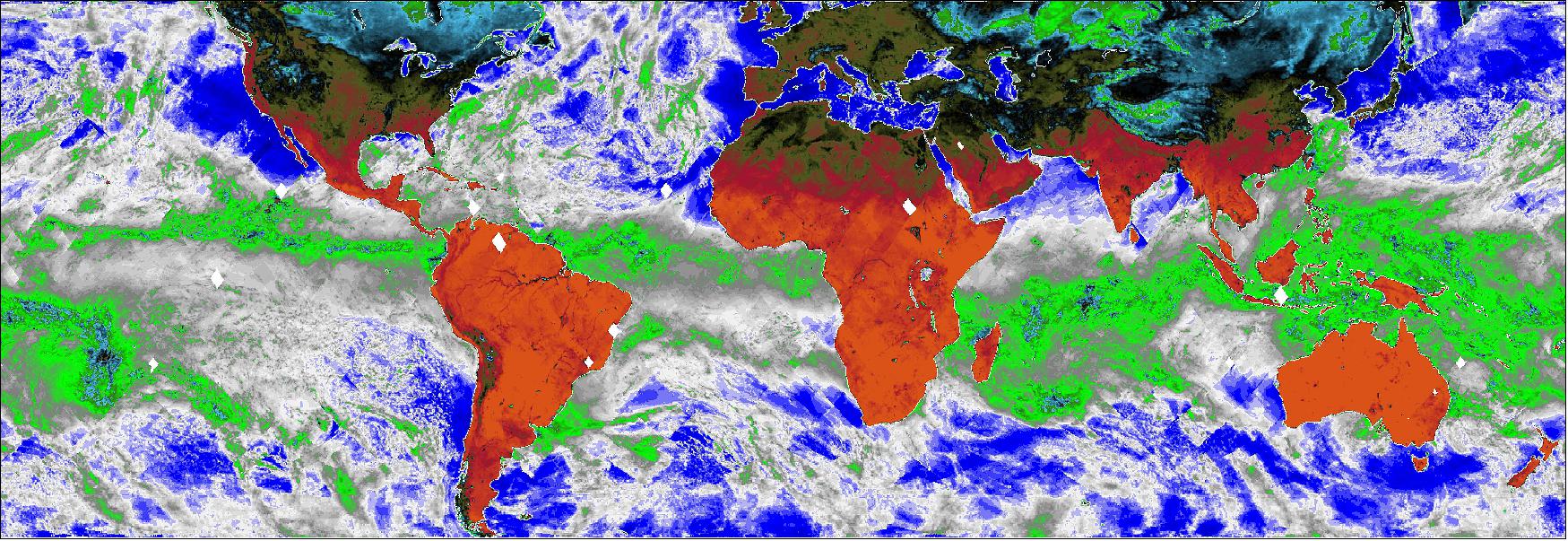
- Part of the U.S. Space Force’s Space Test Program-Houston 8 (STP-H8), the instruments were designed to demonstrate that they can collect data comparable in quality to the larger instruments currently operating in orbit.
- This new map from COWVR shows microwave emissions from Earth at 34 GHz through all latitudes visible to the space station (±52º ). This particular microwave frequency provides weather forecasters information on the strength of winds at the ocean surface, the amount of water in clouds, and the amount of water vapor in the atmosphere.
- Green and white on the map indicate higher water vapor and clouds, while dark blue over the ocean indicates drier air and clear sky. The image captures typical weather patterns, such as tropical moisture and rain (the green band stretching across center of map) and mid-latitude storms moving across the ocean.
- "We’re off to a great start,” said Shannon Brown, the JPL technologist who designed the COWVR instrument. “Seeing this quality of data so early into the mission sets the stage for very exciting things to come.”
- COWVR is a complete rethinking of a classic instrument design, while TEMPEST is the product of a long advance toward miniaturizing instrument components. If they continue to prove successful, they will crack open the door to a new era where lower-cost satellites complement the existing weather satellite fleet.
• January 19, 2022: Two U.S. Space Force experimental science payloads were successfully installed on the International Space Station last week and have begun collecting data, Space Systems Command officials said. 9)
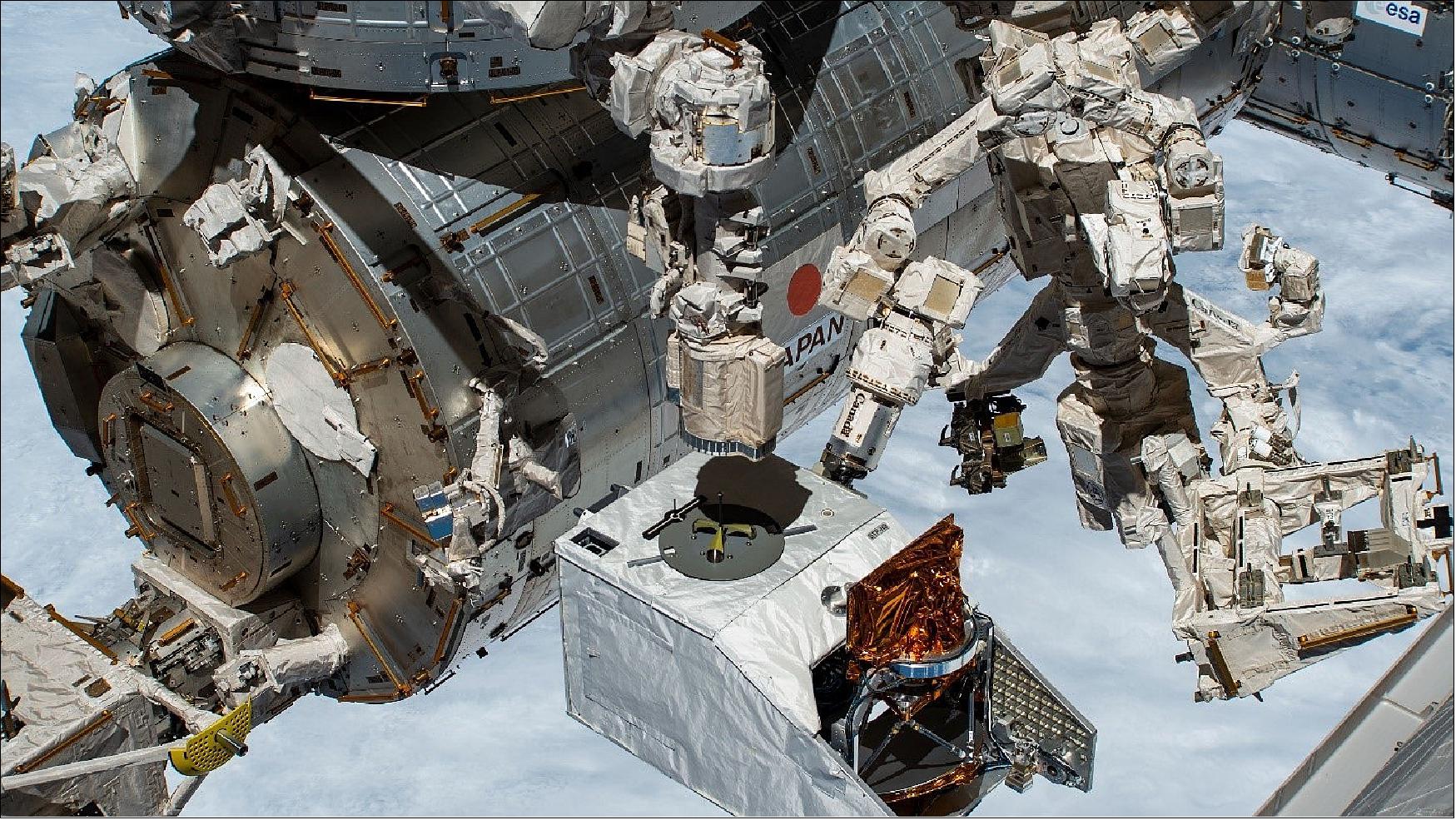
- The STP-H7 and STP-H8 payloads, carrying a total of nine experiments, were initially launched Dec. 21, 2021, aboard NASA’s SpaceX-24 resupply mission to the ISS. They were transferred to ISS external modules using the Special Purpose Dexterous Manipulator (SPDM) from the Cargo Dragon trunk.
- “The STP team was incredibly excited to see both the H7 and H8 payloads go from concepts to full-fledged payloads installed on the ISS in just over three years and encompassing a time-period encumbered by a global pandemic,” said William Chastain, STP-H8 Mission Manager/STP Houston Technical Director. “Building, testing, certifying, and flying two STP-Houston flagship payloads on a single flight was a major first for our small remote operating location (OL-S),” Chastain said. “Both payloads were fully deployed with all science experiments functional within just a few hours of the robotic transfers.”
- STP-H8 was the first of the payloads to be removed from the SpaceX Dragon trunk by NASA’s robotics operators on Jan. 7 and installed on its external hosting site, the Japanese Experiment Module. STP-H8 involved a robotic hand-off from the SPDM to the Japanese Experiment Module Remote Manipulator System, Chastain said.
- The three experiments on H8 include a microwave radiometer designed to measure ocean surface wind data; a passive radiometer to provide companion data by measuring the time evolution of clouds; and a radiation monitor with a new type of gamma ray detection material.
- On Jan. 11, STP-H7 was installed on the European Space Agency’s Columbus module to begin its mission. Once installed, the STP ops team at STP’s Houston location powered up the payload and conducted activation of the STP-H7 platform systems and all six experiments and completed functional testing with the support of the experiment teams, said Craig R. Lamb, STP’s Human Spaceflight Payloads Office at NASA’s Johnson Space Center.
- STP-H7’s six one-year experiments include a near-infrared camera designed to observe airglow, the faint emission of light in the upper atmosphere at the boundary between Earth’s atmosphere and space; an experiment to acquire imagery of scenes while the sun is in its field of view; an experiment to adapt and evaluate advanced sensing and computing technologies for autonomous sensor processing on small spacecraft; a neuromorphic camera that will demonstrate a novel means of detecting sprites, or large-scale electric discharges; an experiment using GPS to measure sea state and ocean surface vector winds; and a radiation monitor.
- “Experiments and demonstrators such as those on STP-H7 and H8 are critical first steps to getting new technologies into the pipeline, verifying the viability of the technology in a low-cost, low-threat environment before investing the necessary funding for production efforts,” Chastain said.
- Chastain and Lamb said the successful mission marked two major ISS external payloads activated in five days, thanks to the combined efforts of the U.S. Department of Defense’s Space Test Program, the experiment teams at Space Systems Command, Development Corps; Space Systems Command Special Programs Directorate; the Air Force Research Laboratory; Naval Information Warfare Center Pacific; the U.S. Air Force Academy; the U.S. Naval Research Laboratory; the Jet Propulsion Laboratory; SpaceX and to the NASA partners who launched and hosted STP-H7 and H8 on the ISS.
- “The launch of a payload into space often gets the most attention from the public and even within our own SSC,” Lamb said. “But to us, it marks the transition of the payload from two to three years of rigorous and challenging development and flight certification work to the phase where we can finally collect data from the experiments. It is also the point where more than 95 percent of the resources for the mission have been spent, the on-orbit operations are surprisingly cost effective.”
- “We open up command windows for the experiment teams so they can directly control their experiments and collect data in their own facility,” Lamb said. “We call it ‘keeping the lights on’ so they can run their experiments. We essentially extend their laboratory into space from the comfort of their own facility. These experiments will operate anywhere from a year to three years; we only need to step in if something goes wrong or needs our attention.”
- “This transition into operations for STP-H8 and H7 also marks the point where we shift more of our resources into our next missions: STP-H9, STPSat-7, and STP-H10,” Lamb said. “We have many missions that are overlapping and running in parallel.”
- “We have an on-going planning process that starts about three years before launch and results in a payload flying to the ISS and then after its useful life, is gets disposed of,” Lamb added.
“We disposed of STP-H6 by attaching it to a re-entering Cygnus resupply vehicle in Dec 2021. That payload operated for two years on the ISS and its mission was complete. It was safely disposed of by disintegrating it along with the Cygnus NG-16 resupply vehicle when they both re-entered the atmosphere over the southern Pacific Ocean.”
- The DoD’s Space Test Program has been sending experimental scientific payloads into space since 1965. To date, STP has executed more than 289 missions and provided spaceflight for more than 636 DoD experiments. The Global Positioning System started out as an early STP research project.
- Space Systems Command is the U.S. Space Force field command responsible for rapidly identifying, prototyping and fielding resilient space capabilities for joint warfighters. SSC delivers sustainable joint space warfighting capabilities to defend the nation and its allies while disrupting adversaries in the contested space domain. SSC mission areas include launch acquisition and operations; space domain awareness; positioning, navigation and timing; missile warning; satellite communication; and cross-mission ground, command and control and data.
References
1) ”Small but Mighty NASA Weather Instruments Prepare for Launch,” NASA/JPL, 2 November 2021, URL: https://www.jpl.nasa.gov/news/
small-but-mighty-nasa-weather-instruments-prepare-for-launch?utm_source=iContact&
utm_medium=email&utm_campaign=nasajpl&utm_content=daily20211103-1
2) Jennifer Scott Williams, ”ISS Research Capability for Hosting Space Science Instruments,” APD 2021 SMEX & MO Pre-proposal Conference, September 14, 2021, URL: https://explorers.larc.nasa.gov/2021APMIDEX/pdf_files/09-ISS.pdf
3) Jane J. Lee, Ian J. O’Neill, Esprit Smith, ”5 Things to Know About a Pair of Small But Mighty Weather Instruments,” NASA/JPL News, 21 December 2021, URL: https://www.jpl.nasa.gov
/news/5-things-to-know-about-a-pair-of-small-but-mighty-weather-instruments
4) Noah Perryman, Theodore Schwarz, Thomas Cook, Seth Roffe, Antony Gillette, Evan Gretok, Tyler Garrett, Sebastian Sabogal, Alan George, Ricardo Lopez, ”STP-H7-CASPR: A Transition from Mission Concept to Launch,” Proceedings of the 35th Annual AIAA/USU Virtual Conference on Small Satellites, August 7-12, 2021, Logan, UT, USA, paper: SSC21-WKII-08, URL: https://digitalcommons.usu.edu/cgi/viewcontent.cgi?article=5115&context=smallsat
5) Lee J. Mitchell, Bernard F. Philips, Richard S. Woolf, Theodore T. Finne, Anthony L. Hutcheson, W. Neil Johnson, Mary Johnson-Rambert, and Rose Perea "GAGG Radiation Instrumentation (GARI)", Proceedings of SPIE, Vol. 11821, 'UV, X-Ray, and Gamma-Ray Space Instrumentation for Astronomy XXII, 1182105', 24 August 2021; https://doi.org/10.1117/12.2598588
6) M. G. McHarg, J. Harley, R. L. Balthazor,G. Wilson, B. J. McReynolds, G. Cohen, D. Howe, M. Colin, ”Falcon Neuro—Neuromorphic Cameras for sprite and lightning detection on the International Space Station,” American Geophysical Union, Fall Meeting 2020, Abstract, Dec. 2020
7) Amanda Bayless, Richard Rudy, Lynette Gelinas, James Hecht, Dave Gutierrez, Kirk Crawford, ”Pre-Flight Calibrations for the PIANO Airglow Camera on the ISS,” The Aerospace Corporation, 21 September 2021, URL: https://calcon.sdl.usu.edu/technical-program/sessions-docs/session6.pdf
8) Carol Rasmussen, ”New Space-Based Weather Instruments Start Gathering Data,” NASA/JPL News, 8February 2022, URL: https://www.jpl.nasa.gov/news/
new-space-based-weather-instruments-start-gathering-data?utm_source=iContact&
utm_medium=email&utm_campaign=nasajpl&utm_content=daily20220208-1
9) Lisa Sodders, ”STP-H7 and H8 Scientific Payloads Successfully Installed, Collecting Data on the ISS,” SSC (Space Systems Command), 19 January 2022, URL: https://www.ssc.spaceforce.mil/News/
Article-Display/Article/2904427/stp-h7-and-h8-scientific-payloads-successfully-installed-collecting-data-on-the
The information compiled and edited in this article was provided by Herbert J. Kramer from his documentation of: ”Observation of the Earth and Its Environment: Survey of Missions and Sensors” (Springer Verlag) as well as many other sources after the publication of the 4th edition in 2002. - Comments and corrections to this article are always welcome for further updates (eoportal@symbios.space).
COWVR TEMPEST Launch STP-H7 Mission Status References Back to top